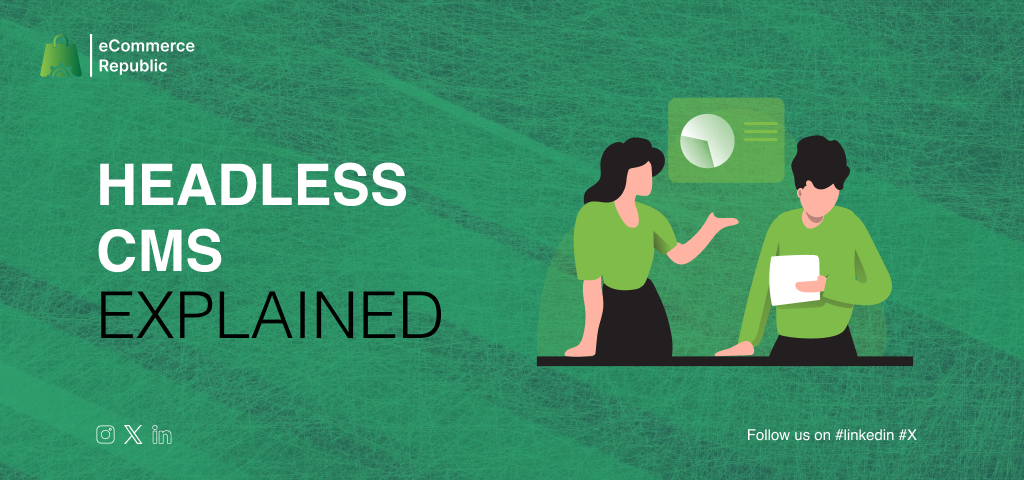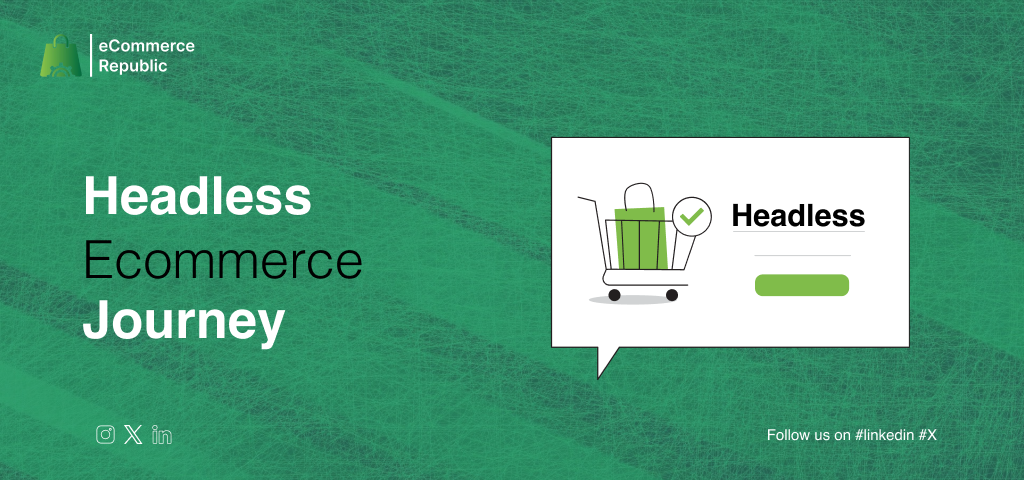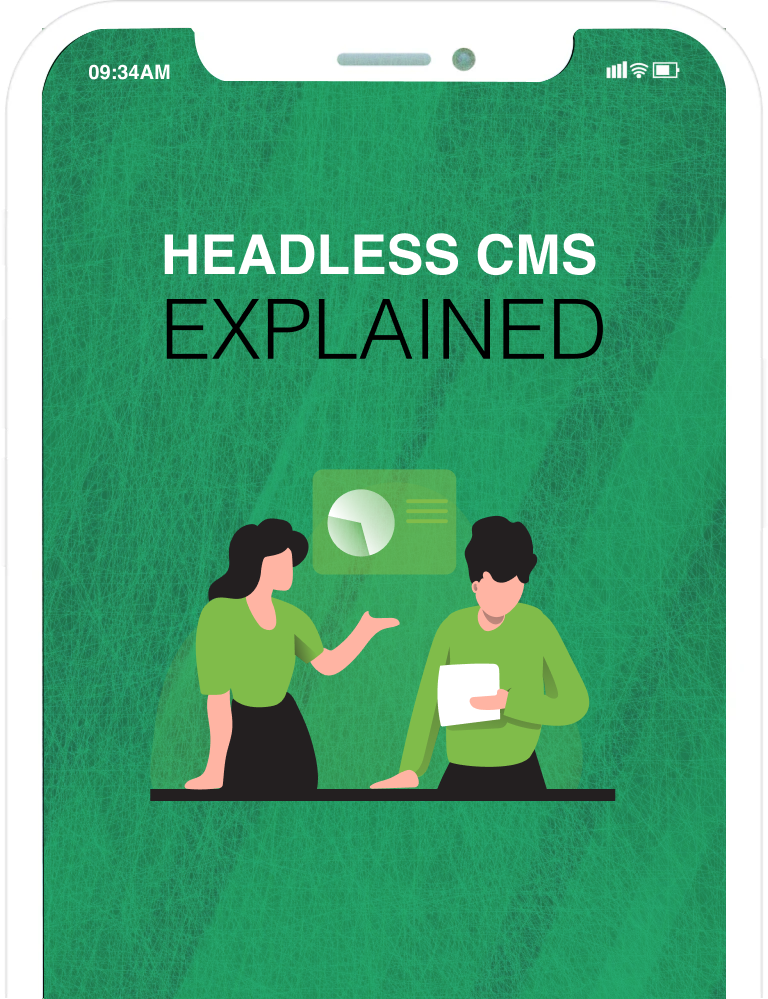As digital expectations rise, businesses require more flexible, scalable, and performant architectures to meet consumer demand across devices, channels, and touchpoints. This is where headless CMS and headless eCommerce enter the scene. Unlike traditional monolithic systems, headless architecture decouples the frontend and backend, empowering developers and marketers to create seamless, omnichannel experiences.
In this comprehensive guide, crafted by the experts at eCommerce Republic – a leading USA-based eCommerce agency – we’ll explore what headless architecture is, compare headless CMS vs traditional CMS, review leading headless CMS platforms, dive deep into headless eCommerce development, and answer frequently asked questions to help you make informed decisions for your business.

What is a Headless CMS?
A headless CMS (Content Management System) is a backend-only content management system where the content repository (“body”) is separated from the presentation layer (“head”).
Headless CMS Definition: A CMS that allows you to create, manage, and store content without tying it to a specific frontend delivery layer.
Content is accessed via APIs (usually RESTful or GraphQL), giving developers the freedom to build rich user experiences across web, mobile apps, IoT, AR/VR, smart displays, and more.
Benefits of Headless CMS:
- Omnichannel publishing
- Faster time to market
- Scalable architecture
- Future-proof development
- Developer flexibility
Headless CMS vs Traditional CMS
| Feature | Traditional CMS | Headless CMS |
|---|---|---|
| Architecture | Monolithic | Decoupled |
| Frontend Dependency | Tightly coupled | Independent |
| Content Delivery | Page-based | API-driven |
| Customization | Limited | High |
| Flexibility | Low | High |
| Speed & Performance | Slower | Faster |
Traditional CMSs like WordPress or Drupal bundle both backend and frontend, limiting flexibility. A headless CMS architecture allows content to be reused and published across any digital platform.
Best Headless CMS Options in 2025
With many headless CMS platforms emerging, choosing the right one depends on your tech stack, budget, scalability, and customization needs. Here are some headless CMS examples:
1. Sanity Headless CMS
A flexible platform with real-time collaboration, powerful APIs, and customizable schemas.
2. WordPress Headless CMS
Using REST API or GraphQL, WordPress can act as a headless CMS, ideal for content teams familiar with the classic interface.
3. Contentful
A market leader known for intuitive UI, global CDN, and developer-friendly tools.
4. Strapi (Open Source Headless CMS)
Popular among developers for its flexibility, plugin support, and open-source community.
5. Netlify CMS
Best for static site generators and Git-based workflows.
6. Ghost
Focused on publishing and SEO, Ghost can also be used in a headless mode.
Headless CMS Development: Why It Matters
Headless CMS development allows businesses to innovate faster. Developers can use frameworks like React, Vue.js, or Angular to build dynamic, responsive interfaces.
React Headless CMS is among the most popular combinations due to its modular component structure and ecosystem support.
By integrating a frontend for headless CMS, businesses can:
- Personalize user journeys
- Boost performance and SEO
- Integrate with modern DevOps workflows
- Scale across international markets and devices
What is Headless eCommerce?
Headless eCommerce follows the same decoupled principle but for online stores. It separates the frontend storefront from the backend commerce engine.
Headless eCommerce Definition: An eCommerce system that uses APIs to connect backend functionalities (cart, checkout, inventory) with any custom frontend.
This enables:
- Faster page loads
- Better UX/UI flexibility
- Personalized shopping experiences
- Greater control over branding
Composable Commerce vs Headless eCommerce
While similar, composable commerce focuses on assembling best-of-breed commerce components via APIs. It includes headless but also embraces a modular architecture with interchangeable services (e.g., checkout, payments, CMS, PIM).

| Aspect | Headless eCommerce | Composable Commerce |
| Approach | Decoupled frontend/backend | Modular microservices |
| API-first | Yes | Yes |
| Flexibility | High | Very High |
| Components | Coupled to one backend | Mix-and-match best tools |
Benefits of Headless eCommerce
Implementing headless eCommerce solutions provides:
- Lightning-fast storefronts (Jamstack, React, Vue, Next.js)
- Enhanced SEO performance
- Real-time personalization
- Reduced cart abandonment
- Seamless integration with marketing tools, CRMs, and ERPs
Best Headless eCommerce Platforms in 2025
Here are leading headless eCommerce platforms to consider:
1. Shopify Plus (Headless Ecommerce Shopify)
Shopify’s Storefront API supports custom frontends using React, Hydrogen, or Gatsby.
2. Commerce Layer
API-first platform designed for global, multi-market experiences.
3. BigCommerce
Offers native support for headless with robust APIs, including GraphQL.
4. Magento 2 (Adobe Commerce)
Can be used headlessly with PWA Studio or Vue Storefront.
5. Saleor (Open Source Headless eCommerce)
A modern, GraphQL-powered open-source platform.
6. Elastic Path
Focused on composable commerce and API orchestration.
Headless eCommerce Development & Solutions
At eCommerce Republic, our headless eCommerce development services include:
- Frontend development with React, Vue, Next.js
- Backend API integration
- Performance optimization
- Mobile-first responsive design
- SEO-rich architecture
- Secure checkout implementation
Whether you’re scaling an enterprise store or launching a DTC brand, our team ensures your transition to headless eCommerce is smooth and ROI-driven.

Headless eCommerce Software Components:
- CMS: Sanity, Contentful, WordPress
- Cart & Checkout: Snipcart, Shopify, Foxy.io
- Search: Algolia, Elasticsearch
- Hosting: Netlify, Vercel
- Analytics: GA4, Segment, Mixpanel
Headless eCommerce API: The Engine of Flexibility
An effective headless eCommerce API supports:
- Product & catalog management
- Cart & checkout workflows
- Inventory syncing
- Customer authentication
- Payments & order fulfillment
Open API protocols enable your commerce backend to connect seamlessly with frontend frameworks and third-party tools.
Frontend for Headless CMS & eCommerce
Choosing the right frontend for headless CMS or eCommerce is crucial.
Common Stack:
- Frontend: React, Vue, Angular
- SSG/SSR: Next.js, Nuxt.js, Gatsby
- Styling: Tailwind CSS, Styled Components
- CDN/Hosting: Vercel, Cloudflare, Netlify
Performance-first frontends improve Core Web Vitals and user experience, key factors in SEO rankings.
Open Source Headless CMS & eCommerce
Open-source solutions offer affordability, transparency, and extensibility:
Top Picks:
- Strapi: Node.js-based CMS with REST and GraphQL
- Directus: Ideal for SQL-based content workflows
- Saleor: Python/Django-based commerce with GraphQL
- Vue Storefront: Universal frontend for headless stores
These tools support community collaboration and custom plugin development.
Headless CMS & Headless eCommerce Examples
- Nike: Uses React and Node.js for global product launches
- Sephora: Combines headless CMS with eCommerce personalization
- Lululemon: Custom mobile-first frontend paired with commerce APIs
These headless eCommerce examples highlight the power of decoupled architectures to drive performance, scalability, and conversion.
Why Choose eCommerce Republic for Headless Solutions?
eCommerce Republic is a USA-based agency delivering robust headless CMS and headless eCommerce development services tailored for:
- High-growth DTC brands
- Scalable B2B portals
- Multi-storefront retailers
With a proven track record in composable commerce, API integration, frontend frameworks, and CMS platforms, we craft future-ready digital solutions that outperform.
Contact Us:
- Phone: +1 917 477 3822
- Email: hello@ecommercerepublic.com
- Headquarters: 1983 Marcus Ave, Suite 204, New Hyde Park, NY, United States
FAQs About Headless CMS and Headless eCommerce
Q1. What is a headless CMS?
A headless CMS separates the content management backend from the frontend display, allowing content delivery through APIs to any device or interface.
Q2. What are the best headless CMS platforms?
Top platforms include Sanity, Contentful, Strapi, WordPress (headless), and Netlify CMS.
Q3. What is headless eCommerce?
Headless eCommerce decouples the frontend (storefront) from the backend (cart, payments), providing more flexibility and faster performance.
Q4. How is headless different from composable commerce?
Composable commerce is a broader strategy involving interchangeable components, while headless focuses primarily on frontend-backend decoupling.
Q5. What is the best headless eCommerce platform?
Leading options include Shopify Plus, BigCommerce, Saleor, and Commerce Layer.
Q6. Can WordPress be used as a headless CMS?
Yes, WordPress headless CMS setups use REST or GraphQL APIs to serve content to custom frontends.
Q7. What frontend frameworks are used in headless architecture?
Common choices include React, Vue.js, Next.js, and Nuxt.js.
Q8. Is headless CMS free or open source?
Some options like Strapi and Directus are free headless CMS tools and open-source.
Q9. What are the benefits of headless eCommerce?
Benefits include better performance, flexibility, omnichannel capabilities, and future-proof technology stacks.
Q10. Why work with a headless eCommerce agency?
Agencies like eCommerce Republic offer specialized expertise in API integration, UI/UX, and platform selection to ensure successful implementation.
Final Thoughts
Whether you’re exploring a headless CMS for better content delivery or launching a headless eCommerce platform for enhanced customer experiences, headless architecture offers the future of flexibility, performance, and scalability. Let eCommerce Republic guide your transformation journey with expert strategy, development, and support.







